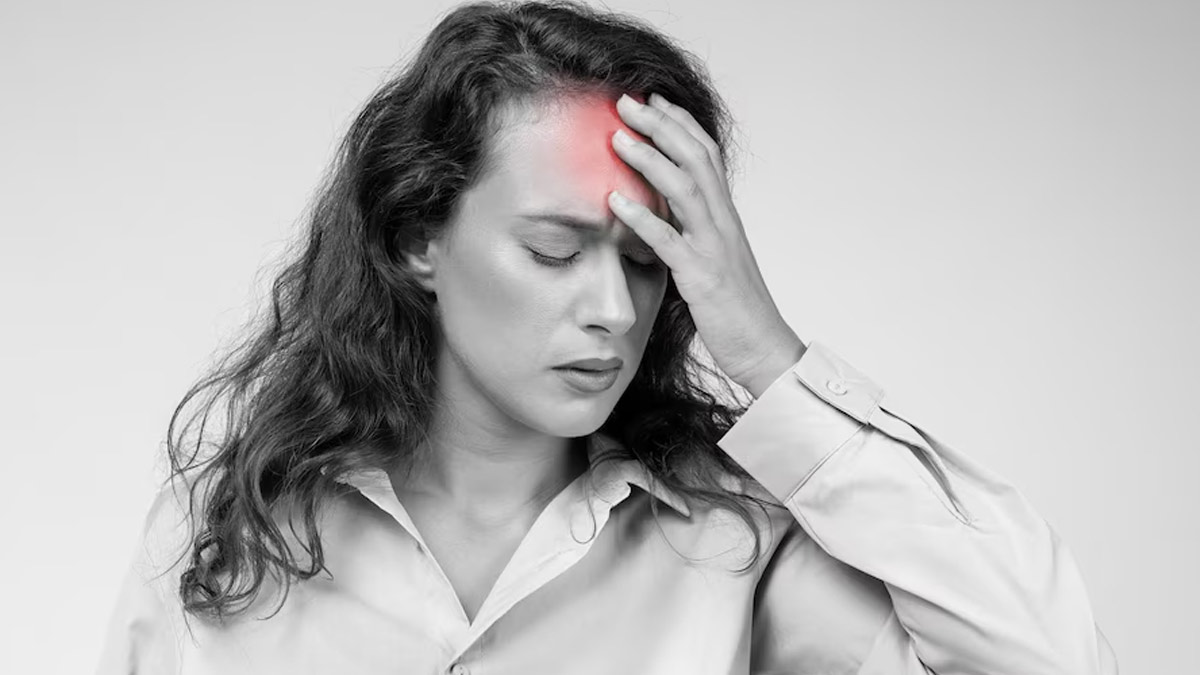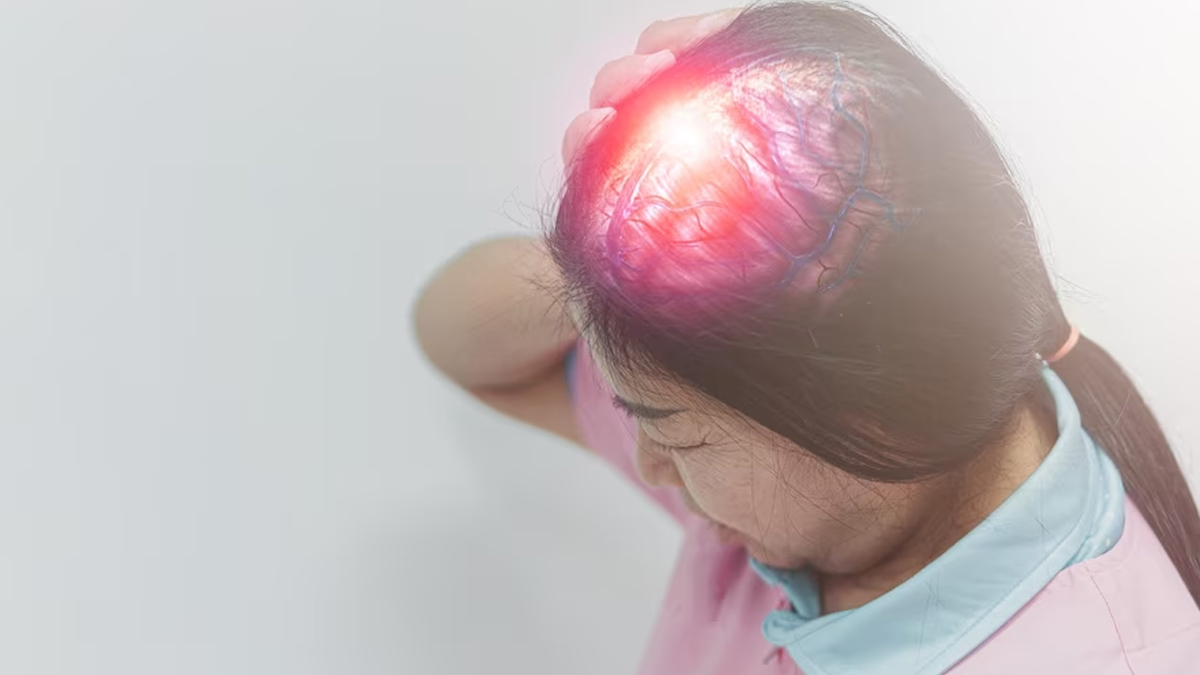
Headaches are probably the most common condition that affects the majority of the population. From stress to poor sleep to dehydration, many factors can trigger a headache. The good news is that about 96% of all headaches are benign. Research suggests that the prevalence of the condition begins to peak between the ages of 25 and 40 and is higher in women than in men. In fact, the prevalence of severe headaches or migraines is 20.7% in women and 9.7% in men.
Table of Content:-
Though headaches are a universal complaint, it is still important to recognise their underlying cause and receive the appropriate treatments. It could be a migraine, or in certain cases, it may even signal a more dangerous disease, which can only be effectively managed if diagnosed on time.
Also Read: What It Means To Get A Headache Everyday At The Same Time
Migraine Headaches

In general, headaches can be broadly classified into two categories, says Dr Chandana R Gowda, Consultant - Neurology, SPARSH Hospital, Yelahanka. These include:
- Primary headaches, which come without an underlying cause.
- Secondary headaches, which arise due to an underlying infection, a tumour, or a head injury.
According to Dr Gowda, migraine is a primary headache that occurs due to alterations in the pain-sensitive structures of the brain.
She shares that an episode of migraine can be subdivided into four phases:
a) Prodrome: Mood changes, trouble sleeping, yawning, difficulty concentrating (up to 24 hours before headache)
b) Aura: Vision changes, altered sensation in arms or legs that last for 5–60 minutes before headache
c) Headache phase: It lasts from 4–72 hours, usually on one side of the head; it has a throbbing quality associated with sensitivity to light and sound and causes nausea and vomiting.
d) Post-drome: It lasts no more than 48 hours and causes fatigue, confusion, and sometimes euphoria.
Signs Your Headache Is More Serious

Migraine headaches are usually intense and throbbing and often occur on one side of the head. Other symptoms that might come along with the pain include nausea, vomiting, sensitivity to light and sound, and vision problems.
However, it is always advised to look beyond the classic signs. Headaches can often be accompanied by other symptoms that could indicate a more serious problem. These include:
- An abrupt onset of a headache that is severe
- Associated fever
- Neck stiffness
- Double vision
- Seizures
- Numbness or weakness in any part of the body
- New headache onset after 50 years of age
Understanding Brain Tumour And Its Characteristics
A brain tumour occurs when cells in the brain start to grow uncontrollably. It can be both benign (non-cancerous) and malignant (cancerous). Benign brain tumours usually grow slowly and are less likely to recur after treatment. On the other hand, malignant tumours grow faster, are more likely to occur again even after treatment, and may spread to other parts of the body.
Brain tumours can be divided into two categories: primary and secondary brain tumours.
A primary brain tumour is a tumour that starts in the brain, whereas a secondary brain tumour is a tumour that starts in another part of the body and then spreads to the brain.
Also Read: How To Treat Headaches Caused By Lack Of Sleep?
Dr Gowda says that headaches are a key symptom of brain tumours, which occur in about 50% of patients. It occurs due to the increased pressure within the cranium, which are the bones that form the head.
Some of the key characteristics of brain tumour-related headaches include:
- Moderate to severe in intensity
- Pain that worsens when coughing or straining
- Significant change in prior headache pattern
- Associated nausea and vomiting
- Neurological symptoms like weakness or abnormal sensations in any part of the body, personality changes, and speech difficulty
Know The Types Of Headache

Dr Aparajita Chatterjee, Consultant-Neurologist, Fortis Hospital, Anandapur, defines headache as a discomfort in the head or face, commonly described as dull-aching, which can be continuous, intermittent, acute, or chronic. According to her, there are various types of headaches that can be identified depending on the location of the pain. We've already discussed how migraine headaches usually occur on one of the heads. Let's find out all about other types of headaches:
Tension headaches
Dr Chatterjee shares that tension headaches cause a lingering, aching pain that wraps around the head, usually involving the whole head (holocranial).
Cluster headaches
This type of headache can be severe, leading to piercing pain around one eye or temple. They usually occur in clusters, with periods of intense pain followed by periods of remission, says Dr Chatterjee. In certain cases, one may also experience red, watery, or droopy eyes.
Sinus headaches
Sinus headaches are associated with sinusitis, or inflammation of the sinuses. It can lead to pain in the front of the face, around the forehead, cheeks, and eyes. According to Dr Chatterjee, the pain may worsen with bending forward or sudden head movements.
Cervicogenic headaches
Cervicogenic headaches start with neck or cervical spine issues. The pain is usually felt on one side of the head or face, starting from the neck upwards, and is often characterised by stiffness in the muscles of the neck and back of the head.
Bottomline
Headaches can mean a lot of things. Different types of headaches can lead to different problems, each with its own set of triggers and causes. It is important to note that early diagnosis plays a crucial role in receiving proper and timely treatment, which ensures a positive patient outcome. Dismissing persistent headaches may not fare well, especially in cases where the underlying cause is severe or even life-threatening. Consult a doctor if you fail to find relief with Over-The-Counter medications or home remedies.
Also watch this video
How we keep this article up to date:
We work with experts and keep a close eye on the latest in health and wellness. Whenever there is a new research or helpful information, we update our articles with accurate and useful advice.
Current Version